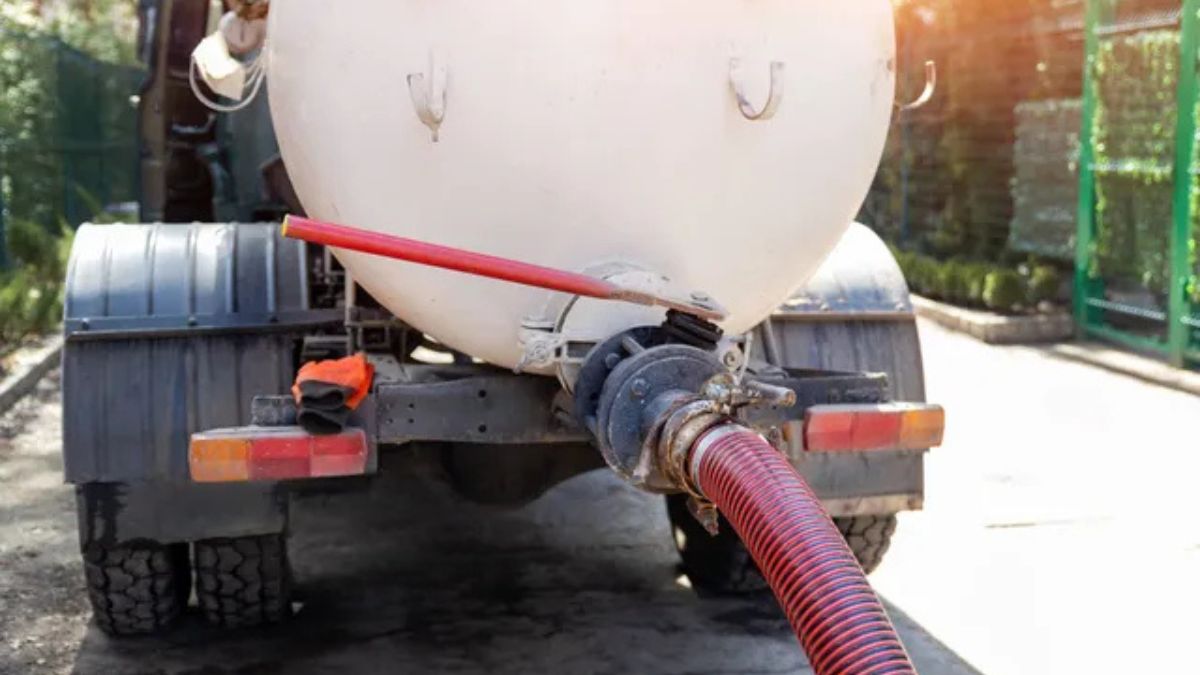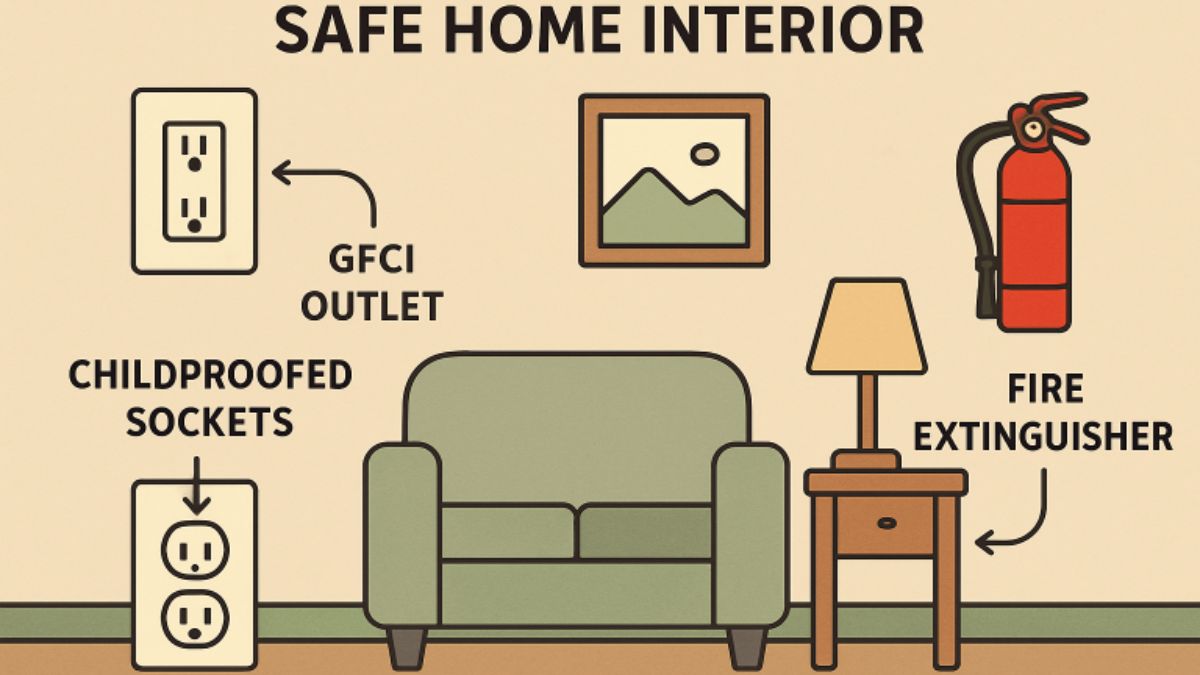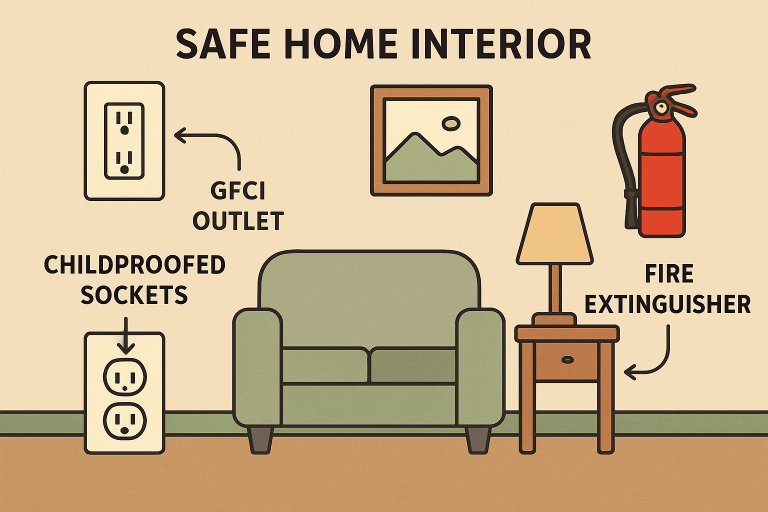HOME IMPROVEMENT
The Essential Guide to Septic Tank Maintenance for Homeowners

Septic systems are integral to effective waste management in numerous homes, particularly those in rural settings. With a primary role in safely treating wastewater, a septic tank’s functionality and efficiency hinge on regular septic tank maintenance. This upkeep not only wards off potentially expensive repairs but also significantly extends the life of your system. While septic maintenance can seem daunting, it’s a manageable task that becomes quite routine once the basic principles are understood. By committing to regular maintenance check-ups and simple daily habits, homeowners can ensure their systems continue to operate smoothly, all while safeguarding the environment and community health.
This comprehensive guide covers critical strategies for optimal septic tank operation, practical tips for ongoing maintenance, and insights into eco-friendly practices. With these strategies, homeowners can manage wastewater treatment effectively, avert common issues, and foster a healthier environment. From understanding the core functions of your septic system to integrating sustainable practices, this guide is your resource for mastering septic system care.
Introduction to Septic Tanks
Septic tanks are an indispensable component in the realm of private sewage management, crucial for homes not connected to municipal sewer lines. These underground chambers are generally constructed from concrete, fiberglass, or plastic and provide initial treatment for household sewage by separating solids from effluent. Septic systems rely on natural biological processes to break down solid waste, thus minimizing environmental risks and ensuring sanitation. Regular septic tank cleaning is essential to maintain system functionality, prevent blockages, and extend the system’s lifespan. Homeowners can appreciate the value of regular and effective maintenance by understanding the role of septic systems within the broader context of household waste management. Such systems not only manage waste efficiently but also play a part in environmental stewardship by minimizing pollution.
How Septic Systems Work
The inner workings of septic systems are fascinating and yet practical. Designed to process wastewater from household activities such as bathing, cooking, and cleaning, these systems operate courtesy of a simple but efficient mechanism. When wastewater exits a home’s plumbing network, it travels through a main drainage pipe into the septic tank. Once inside, the tank provides a calm environment for solids and heavier particles to settle at the bottom, forming sludge. Simultaneously, fats, oils, and lighter materials rise to the top, creating a scum layer. In between, a relatively clear liquid layer, termed effluent, forms. Anaerobic bacteria within the septic tank play an essential role by decomposing organic matter in the sludge and scum layers, thereby treating the wastewater. The effluent then flows out to the drain field, where further treatment occurs as it percolates through the soil, which functions as a natural filter, eliminating harmful bacteria and nutrients.
Signs Your Septic Tank Needs Maintenance
Effective maintenance begins with awareness of early warning signs that your septic system may be under stress. Paying attention to changes within the household plumbing or outdoor environment can help identify potential issues. For instance, sluggish drainage in sinks or shower stalls could indicate a blockage in the system. An unpleasant odor around the septic area often suggests that there is an issue with the tank or drain field. Moreover, if water usurps unexpected areas of your yard, notably around the septic tank or drain field, this may indicate the system is overwhelmed or malfunctioning. Lastly, sewage backups inside the home are critical signs of septic failure that require immediate professional intervention to prevent health hazards and structural damage. By heeding these signs promptly, homeowners can avoid severe malfunctions and sustain a healthy septic system. For further insights into wastewater treatment basics, consider reading this informative resource.
Best Practices for Septic Tank Care
Implementing best practices for septic tank care can significantly reduce the likelihood of mechanical failure and extend the system’s life. Key strategies include water conservation measures since excessive water use can inhibit the tank’s ability to process waste effectively. Homeowners should space out heavy water use chores, such as laundry or dishwashing, and avoid continuous water flow that might overwhelm the tank. Flushing only biodegradable substances is another vital practice. Items such as wipes, diapers, sanitary products, and even some personal care products can clog the system and disrupt bacterial activity. Using septic-friendly cleaners protects the essential bacterial flora within the system, which is crucial for breaking down solids and facilitating sludge decomposition. Finally, scheduling regular professional pumping and inspection services ensures that your septic system is always in peak condition, with any latent issues addressed swiftly.
Common Problems and Solutions
Septic systems, while robust, can encounter common issues as a result of neglect or external factors. For example, tree roots can infiltrate and obstruct the drainage system, leading to persistent clogs and water flow issues. Prevent this by planting trees at a safe distance from the septic tank and drain field. System overloads are another prevalent issue, where excessive water usage exceeds the septic system’s capacity to treat waste efficiently. Practicing mindful water conservation can mitigate this problem. Clogs, often caused by the improper disposal of fats, oils, or unsuitable materials, can be prevented by keeping such items out of the drainage system altogether. Addressing these concerns head-on with suitable and immediate solutions can maintain system effectiveness and prevent costly repairs.
The Importance of Professional Inspections
While regular homeowner maintenance is effective in sustaining a septic system’s health, periodic professional inspections are critical. Certified inspectors possess the expertise and diagnostic tools necessary to comprehensively evaluate the system’s condition. During an inspection, potential problems like leaks, ineffective bacteria levels, or unseen structural issues can be identified and rectified before they develop into more significant and costly concerns. Inspections may also reveal the need for adjustments in household practices to improve septic performance. Regular consultations with professionals ensure that homeowners stay informed about the latest technology and practices in septic management, paving the way for an efficient, long-lasting system.
HOME IMPROVEMENT
Essential Home Electrical Safety Tips Every Homeowner Should Know

Maintaining a safe electrical system in your home is one of the most critical responsibilities of a homeowner. Electrical hazards are a leading cause of house fires and injuries, making it essential to stay vigilant and proactive about electrical safety. Knowing what to look out for, which safety devices to install, and how to use household electronics responsibly can help create a secure environment for the entire family. If you’re considering upgrades or repairs, relying on experienced professionals for installation services Richmond, OH, is a smart move to ensure compliance and safety.
Many common electrical risks can be prevented with a mix of regular inspections, proper equipment, and educated awareness. Simple steps like checking for typical warning signs, using correct appliances and cords, and knowing your limits are vital. These habits not only protect people and property but also minimize the risk of costly damage or emergencies that can disrupt your everyday life.
Homes with updated electrical systems and modern safety features are less likely to experience avoidable incidents such as electrical fires or accidental shocks. Whether you live in a newer property or an older home, routine care and upgrades can make all the difference. Ultimately, prioritizing safety now can protect your loved ones for years to come.
If you have small children, pets, or a lot of electronics in your home, taking these steps is especially critical. Electrical failures or malfunctions are among the top causes of home fires in the United States, underscoring the importance of vigilance throughout every room in the house.

Conduct Regular Electrical Inspections
Routine inspections are the cornerstone of a safe electrical system. Homeowners should visually assess outlets, switches, and visible wiring for any unusual signs such as flickering lights, buzzing noises, or a burning smell. Outlets or switches that feel warm to the touch are also red flags indicating electrical resistance and potential fire hazards.
While some routine checks are manageable, it’s best to schedule a professional inspection every several years, or sooner if your home is older or you notice recurring issues. Experts can inspect hidden wiring, circuit breaker panels, and ensure all systems are operating safely and up to code.
Install GFCIs and AFCIs
Ground Fault Circuit Interrupters (GFCIs) are vital in areas exposed to moisture, like kitchens, bathrooms, garages, and outdoor spaces. GFCIs immediately shut off electricity if a ground fault is detected, reducing the risk of shock and serious injury. Similarly, Arc Fault Circuit Interrupters (AFCIs) are designed to protect against electrical fires caused by arcing in wiring—often a hidden and dangerous fault.
Both devices are reasonably easy to install for a licensed electrician and provide invaluable peace of mind. The Electrical Safety Foundation International (ESFI) outlines the importance of installing these devices as basic home protection features, not just optional upgrades.
Practice Appliance Safety
Always use appliances according to their manufacturer’s instructions and check regularly for any signs of damage, wear, or dysfunction. Unplug small appliances when not in use, which not only prevents phantom energy draw but also reduces exposure to hidden faults. Never use any device with a frayed power cord, loose plug, or visible internal wiring. Appliances should be kept away from water sources, and extra caution should be taken in bathrooms and kitchens. Wet hands and electronics don’t mix—ensure surfaces and your hands are dry before touching any plugged-in device.
Use Extension Cords Wisely
Extension cords are meant to be temporary solutions—relying on them too much can overload circuits or create trip and fire hazards. Never run extension cords under carpets, rugs, or squeeze them through doorways, as the friction and pressure can degrade the cord’s protective covering. Avoid daisy-chaining several cords together, and use cords rated for your specific needs (indoor versus outdoor, for example).
If you routinely need more outlets, it’s far safer to have a qualified electrician add new receptacles or upgrade your existing circuits.
Avoid Overloading Circuits
One of the most common causes of home electrical fires is overloading circuits—plugging too many high-draw devices into the same outlet or power strip. Each electrical circuit in your home is designed to carry a limited load, and surpassing this can trip breakers, melt wires, or spark a fire. Use power strips with built-in surge and circuit breakers as an added safety measure, and distribute large appliances throughout separate circuits when possible.
Recognize Warning Signs of Electrical Problems
Be proactive in spotting symptoms of developing electrical problems. Persistent circuit breaker trips, outlets or switches that emit a burning odor, hot or discolored outlets, or visible sparks when plugging things in are all serious warning signs. Do not ignore these symptoms—prompt professional intervention can prevent serious accidents. Flickering lights, while sometimes dismissed as harmless, may indicate dangerous, loose wiring or faulty connections hidden behind your walls. Call an electrician to diagnose the issue safely.
Know When to Call a Professional
Handling electrical repairs without proper training is extremely risky. Minor issues like changing a light bulb or resetting a breaker are reasonable DIY tasks, but for anything involving wiring, panel upgrades, or persistent electrical malfunctions, contact a licensed electrician. Professional electricians follow strict safety protocols and local codes, ensuring lasting, hazard-free repairs or installations.
Whenever you undertake significant renovations or add major appliances, consult an expert to determine whether your electrical system can safely handle the increased load. Peace of mind and prevention are always worth the investment.
Childproof Your Outlets
With young children or frequent visitors, protecting outlets is essential to avoid accidental shock. Tamper-resistant receptacles (TRRs) are affordable upgrades that prevent small objects or fingers from entering outlets, safeguarding curious kids. These outlets have spring-loaded shutters that allow a connection only when equal pressure is applied to both slots, making them virtually childproof without the need for plug-in covers that can be lost or removed.
Implementing these electrical safety tips can help you create a safer environment for your family and property. Making safety a priority now reduces the risk of preventable disasters in the future. Stay alert to potential dangers, update your system as needed, and when in doubt, always reach out to a professional.
HOME IMPROVEMENT
Elegant Interiors: Exploring the Styles of Catherine the Great Furniture

Introduction to Catherine the Great and her influence on furniture design
Catherine the Great Furniture, one of Russia’s most iconic rulers, was not just a formidable leader; she was also a patron of the arts and an influential figure in furniture design. Her reign from 1762 to 1796 marked a transformative period in Russian history that saw cultural advancements and extravagant displays of wealth. Catherine had a keen eye for elegance and sophistication, which reflected beautifully in her choices for interior decor.
The furniture crafted during her time showcases two prominent styles: Rococo and Neoclassical. Each piece tells a story—not only about aesthetics but also about the Empress herself. From lavish salons to intimate chambers, every item reveals layers of personality, power, and taste that defined her court life.
As we delve into the intricacies of Catherine the Great’s furniture designs, prepare to be captivated by their beauty and historical significance. Discover how these exquisite creations continue to inspire modern interpretations today. Whether you’re an avid collector or simply appreciate refined interiors, exploring Catherine’s legacy is sure to spark your imagination.
The Rococo Style in Catherine’s Furniture
The Rococo style dominated the furniture design during Catherine the Great’s reign. This aesthetic is characterized by its ornate and playful elements, often featuring curves and asymmetry.
Catherine embraced this style, infusing her palace with pieces that exuded elegance. Delicate carvings adorned chairs and tables, often depicting floral motifs and shell-like shapes. These designs captured a sense of whimsy while maintaining an air of sophistication.
Rich materials played a crucial role in Rococo furniture. Gilded surfaces shimmered under candlelight, enhancing the luxurious feel of spaces like the Winter Palace.
This style was not merely decorative; it reflected Catherine’s personality—bold yet refined, extravagant yet graceful. Each piece told a story, showcasing her artistic vision as well as her desire to impress both guests and diplomats alike.
Rococo influences can still be felt today in various interpretations of interior design that celebrate beauty through intricate detailing.
The Neoclassical Style in Catherine’s Furniture
Catherine the Great embraced the Neoclassical style as a means to reflect her vision of power and sophistication. This design movement drew inspiration from ancient Greece and Rome, merging classical elements with modern elegance.
Her furniture pieces often featured clean lines, symmetrical shapes, and minimal ornamentation. Rich materials like mahogany and satinwood were used to create stunning finishes that captured attention without overwhelming the senses.
Intricate carvings depicting mythological scenes or floral motifs adorned chairs and tables alike. Each piece told a story that resonated with Catherine’s intellectual pursuits and appreciation for art.
The incorporation of Greek columns or Roman-influenced silhouettes can be seen in many items throughout her residences. These thoughtful details conveyed not only aesthetics but also an aura of authority befitting an empress who redefined her empire through culture and refinement.
The Empress’ Favorite Pieces: A Look at Her Iconic Furniture
Catherine the Great’s furniture collection is legendary. Each piece reflects her exquisite taste and ambition.
One standout item is the famous Malachite Room, adorned with stunning malachite columns and intricate gilded details. This room exemplifies opulence and grandeur.
Another iconic piece is the magnificent Pagoda-style writing desk. Crafted for both beauty and functionality, it reveals Catherine’s passion for literature and intellect.
The sumptuous giltwood sofas in her private chambers are equally remarkable. Their elegant curves invite relaxation while showcasing lavish fabrics that tell stories of luxury.
We cannot forget about her crystal chandeliers, sparkling like stars above elegantly set tables during grand soirées. They illuminate not just rooms but also the vibrant court life of St. Petersburg under Catherine’s reign.
Each item tells a story—of power, refinement, and a woman who transformed an empire through artful design.
How Catherine’s Furniture Reflects Her Reign and Personality
Catherine the Great’s furniture was more than mere decoration; it symbolized her ambition and intellect. Each piece reflected her vision of a modern Russia, bridging tradition with progressive ideals.
Her selections often showcased opulence, illustrating her status as an enlightened ruler. Intricate carvings and luxurious fabrics were not just for aesthetics but also conveyed power.
The balance between grandeur and functionality in her designs mirrored Catherine’s personality—dynamic yet pragmatic. She surrounded herself with beauty while maintaining effective governance, embodying both elegance and strength.
Soft colors paired with ornate details created inviting spaces that encouraged intellectual discourse. Her interiors fostered a sense of community among artists, philosophers, and diplomats.
Thus, Catherine’s furniture captures the essence of a formidable leader who embraced culture while shaping history. It tells the story of an era defined by transformation through artful craftsmanship.
Modern Interpretations of Catherine the Great’s Furniture Designs
Modern designers draw inspiration from Catherine the Great’s furniture to create stunning pieces that echo her grandeur. The fusion of historic elegance with contemporary aesthetics breathes new life into interiors.
Craftspeople today are reimagining Rococo curves and Neoclassical symmetry, blending them with minimalist sensibilities. This results in furniture that captures the opulence of an empire while maintaining a lightness suitable for modern spaces.
Textiles also play a vital role. Luxurious fabrics reminiscent of Catherine’s era find their way into current designs, often updated with bold colors and prints.
Sustainable materials further enhance these interpretations, marrying traditional craftsmanship with eco-conscious practices.
As interior enthusiasts seek to incorporate historical elements into their homes, they turn to these revitalized interpretations of Catherine the Great’s iconic styles. Each piece tells a story—a blend of past glory and present innovation—inviting admiration in any setting.
Conclusion: The Enduring Legacy of Catherine the Great’s Elegant Interiors
Catherine the Great Furniture influence on design extends far beyond her reign. Her ability to blend styles, from Rococo opulence to Neoclassical elegance, has inspired generations of designers and decorators. The pieces she commissioned tell a story—not only of luxury but also of her vision for Russia as a cultural powerhouse.
Today, Catherine’s furniture serves as a timeless reference point in interior design. Modern interpretations continue to echo her flair for grandeur while integrating contemporary sensibilities. This enduring legacy is evident in how these historical designs still resonate within modern homes and public spaces alike.
As we explore elegant interiors influenced by Catherine the Great Furniture, we appreciate not just their beauty but also the rich history they embody. Each piece stands as a testament to an empress who shaped an era and left an indelible mark on the world of art and design. The essence of Catherine the Great’s style continues to inspire those seeking sophistication and elegance in their own spaces today.
HOME IMPROVEMENT
How to Source Quality Materials for Custom Cabinets?

Finding the right materials for custom cabinetry isn’t just about aesthetics—it’s about creating something that lasts. You know what I mean? After fifteen years in this industry, I’ve learned that quality sourcing can make or break a project, regardless of whether you’re a weekend warrior or running a cabinet business.
Understanding Your Wood Options
Let’s start with the backbone of any cabinet: the wood. Hardwoods like maple, oak, cherry, and walnut remain the gold standard for quality cabinetry. Each brings its own character to the table.
Oak? Super durable, with those distinctive grain patterns that some clients absolutely love. Maple offers that smooth, consistent surface that takes paint beautifully. Cherry darkens gorgeously over time—something to mention to clients who might not know that. Walnut commands premium prices, but man, those rich chocolate tones are worth every penny.
I find that showing clients actual wood samples in different finishes works way better than photos. They need to feel the weight, see how light plays across the grain. Makes all the difference.
Plywood vs. Particleboard: The Great Debate
Here’s where things get interesting. For cabinet boxes, you’ve basically got two camps:
Plywood: More expensive? Yep. Worth it? Usually. The cross-layered construction means it holds screws better and resists warping. Look for cabinets with at least 9-ply construction for the best stability. “Void-free” plywood is what you want—means there are no gaps between the layers.
Particleboard and MDF: Don’t let cabinet snobs fool you. Modern engineered boards can perform incredibly well, especially when properly edge-banded. They’re dimensionally stable and consistent. Sometimes that’s exactly what you need, especially for painted cabinets.
By the way, a little industry secret? Many high-end cabinet shops use premium plywood for the visible ends and shelves but opt for quality particleboard for fixed backs and bottoms. Smart cost-cutting that doesn’t sacrifice quality.
Veneer Selection: Not All Thin Slices Are Equal
If you’re working with veneered cabinets (and many beautiful modern designs are), thickness matters. Standard commercial veneers run about 1/42″ thick, but premium “thick” veneers can go up to 1/16″. The difference? Repairability and sanding options.
When examining veneer quality, check for “book matching”—that’s when the veneer sheets are opened like a book to create mirror-image patterns. Stunning effect when done right.
Hardware That Holds Up
Cabinet faces get all the glory, but honestly? The hardware makes or breaks the everyday experience.
Slides matter. A lot. Blum, Grass, and Accuride are names that represent quality. Full-extension slides cost more but offer complete access to the cabinet interior. Soft-close mechanisms used to be a luxury; now they’re practically expected in custom work.
For hinges, European-style concealed hinges have basically taken over the market, and for good reason. They’re adjustable in three dimensions, which is a lifesaver during installation. Trust me on this one—I’ve salvaged countless projects thanks to those tiny adjustment screws.
Finding Quality Suppliers: Relationships Matter
Here’s something they don’t teach you in design school: sourcing is about relationships. When I started my small cabinet franchise branch years ago, I wasted so much time bouncing between the cheapest suppliers. Lesson learned the hard way.
Now? I maintain relationships with:
- A primary hardwood supplier (preferably one who lets you select your boards)
- A sheet goods distributor with consistent quality
- A specialty vendor for exotic woods and veneers
- A reliable hardware supplier with deep inventory
Actually visiting lumber yards makes a huge difference. You want to see how they store their wood—is it properly stacked? Climate-controlled? These details affect everything downstream.
Sustainable Sourcing: More Than Just Marketing
FSC certification (that’s Forest Stewardship Council) isn’t just a feel-good stamp. It’s becoming a client requirement and, frankly, a responsibility for those of us in the industry.
Beyond certified woods, consider:
- Reclaimed timber (though watch for nails and inconsistent moisture content)
- Rapidly renewable materials like bamboo
- Domestically sourced hardwoods that haven’t traveled halfway around the world
I’ve found that sustainability sells itself these days. Most clients appreciate knowing their beautiful kitchen didn’t contribute to deforestation.
The Finishing Touch: Selecting Quality Finishes
Cabinet finishes need to stand up to real life—steam, grease, cleaning products, you name it. Pre-catalyzed lacquers offer a good balance of durability and repairability. Conversion varnishes are tougher but harder to touch up down the road.
Water-based finishes have come a long way, and many now rival solvent-based options in durability. They’re definitely worth considering if you’re concerned about VOCs—especially for clients with sensitivity issues.
Cost vs. Value: Making Smart Choices
Running a successful cabinet business means making smart material choices, not just expensive ones. Sometimes the premium option truly is necessary. Other times, it’s overkill.
For example, using figured maple on cabinet interiors? Probably wasteful. But skimping on drawer box materials? That’ll come back to haunt you when those drawers start falling apart under daily use.
What’s the bottom line? Identify where quality truly matters to the function and longevity of the piece. Then make informed compromises elsewhere.
Final Thoughts
Sourcing quality materials for custom cabinets is part science, part relationship-building, and—I’ll be honest—part intuition that comes with experience. The best advice I can offer? Handle materials in person whenever possible. Build a network of reliable suppliers. And remember that your reputation rides on these choices.
Whether you’re a solo craftsperson or managing a cabinet franchise operation, the materials you select speak volumes about your commitment to quality. Choose wisely, build relationships with suppliers who understand your standards, and never stop learning about new options hitting the market.
After all, cabinets aren’t just storage—they’re the backdrop for life’s daily moments. They deserve materials that stand the test of time.
-

 TOPIC1 year ago
TOPIC1 year ago7 Expert Tips For Choosing The Best Basement Renovation Companies
-

 TOPIC5 months ago
TOPIC5 months agoWhy Greece Katz Martian Has Everyone Talking in 2025
-

 BUSINESS7 months ago
BUSINESS7 months agoTop 5 Features of Sowix Online That Every User Should Know About
-

 TOPIC6 months ago
TOPIC6 months agoTop Features of BetterThisWorld .com You Need to Know About
-

 FINANCE10 months ago
FINANCE10 months agoHow TraceLoans Can Simplify Your Finances
-

 BIOGRAPHY10 months ago
BIOGRAPHY10 months agoFrom Reality Star to Business Mogul: Prince Narula Digital PayPal
-

 EDUCATION6 months ago
EDUCATION6 months agoThe Evolution of Pi123: How It Became a Must-Have Tool
-

 TOPIC7 months ago
TOPIC7 months agoSabsastaa.com: Your Ultimate Guide to Budget Shopping and Savings
